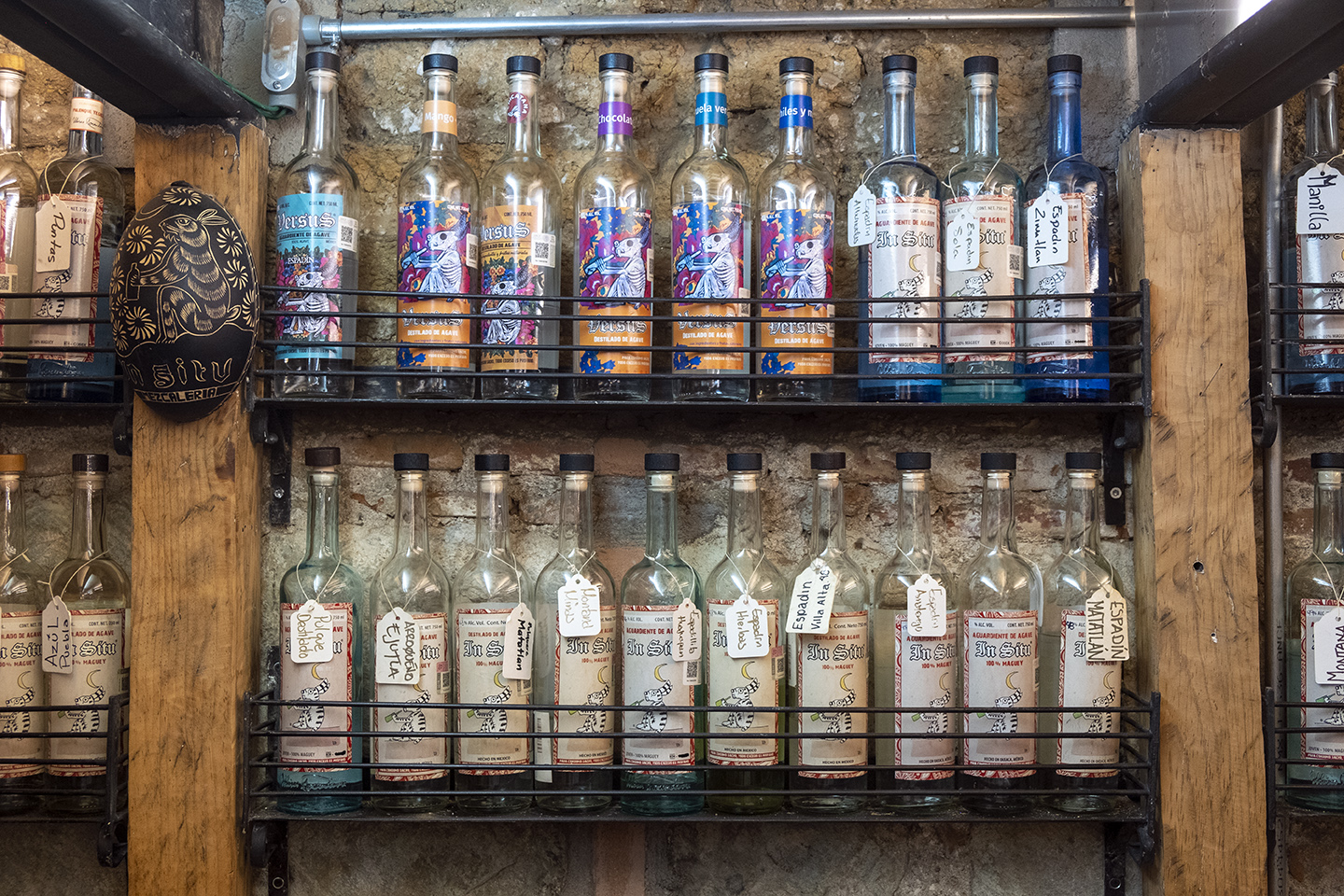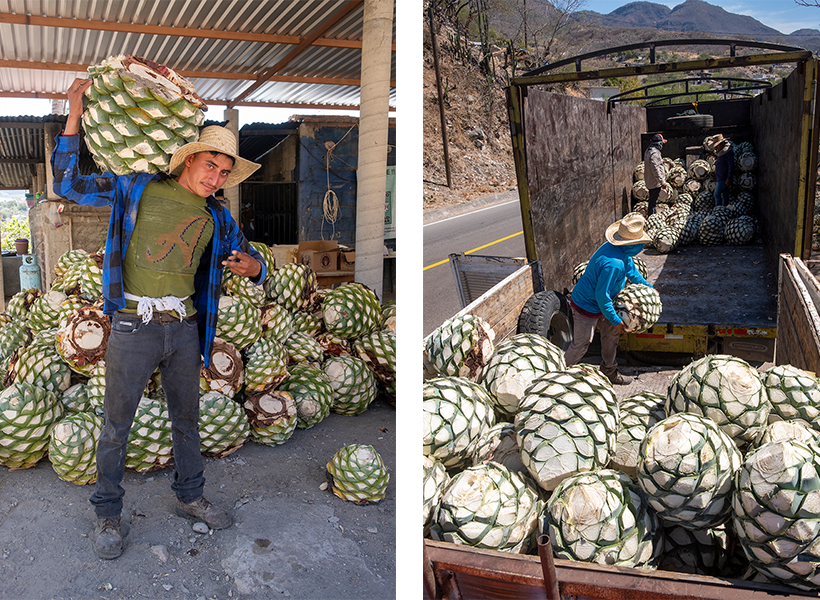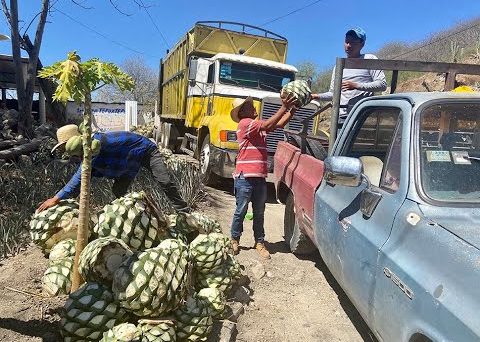
The mezcaleria In Situ boasts the largest selections of mezcal in Oaxaca.
Mezcal, an alcoholic beverage made from the agave plant, originates from the Mexican state of Oaxaca which is also known for its exquisite cuisine, ancient sites, and tradition of arts and crafts. Mezcal, which means “oven-cooked agave,” can be made from over 30 species of agave cactus. However, the most popular is espadin, which is grown in Oaxaca and is the source of 90 percent of mezcal.
The agave plant can live up to 30 years, but it is usually harvested when it is between 7 and 8 years. At the time of harvest, the center fruit or piña can weigh anywhere from 100 to 230 lb (45 to 105 kg).

Agave plantations along highway 190 that goes between the city of Oaxaca to the Pacific coast.
Pulque , a fermented alcoholic beverage made from the agave plant, had been drunk for centuries by indigenous people living in present-day Mexico. When the Spanish conquistadors invaded in the 16
th century, they distilled the pulque drink producing what became known as mezcal. Although tequila is widely considered to be Mexico’s national drink, it is mezcal that was produced first.

Thet piña, or soft center of the agave which can weigh in excess of 100kg, is being transferred from a farmer’s truck to a larger truck.
The production of mezcal is labor intensive, perhaps justifying the drink’s hefty price tag. After the agave plant’s leaves are removed, the piña is cut in half, or into quarters depending on its size, and placed on top of red-hot stones which had been heated by a wood burning fire inside a pit. Once the piñas are laid on the stones, the pit is covered with agave leaves, straw mats, and soil, and left to roast for a few days. Tequila, on the other hand, can only be made from one type of agave. Also, the piña is roasted in a brick oven which accounts for its milder taste compared to the smokey flavor of mezcal.

One of the oldest mezcalerias in Oaxaca with its battered façade and museum like interior.
Once the piña is roasted, it is removed and crushed in a grinding mill or with a giant stone wheel often pulled by a horse or mule and then poured into barrels and mixed with water to begin the fermentation process. A few days later, the liquid and mash are distilled in a stainless steel or copper still. After all the residue is strained, the remaining liquid goes through a final distillation process before it finally becomes mezcal. The spirit can then be blended and bottled right away or stored in oak barrels to achieve a particular taste.
In Oaxaca there are dozens of mezcalerias, or mezcal bars and tasting rooms, that have become fashionable in recent years. Finding the perfect mezcal for your palate can be as complex as finding your favorite Scotch whiskey, bourbon or another alcoholic beverage.

The colorful streets of Oaxaca
The story behind the moth larvae, or caterpillar, found in some bottles of mezcal is ambiguous. Some say the tradition originated with machoism, as male drinkers sought to demonstrate how tough they were by swallowing larvae with a shot of mezcal. The other explanation is that the practice began as a marketing ploy in the 1940s and 50s directed at foreign markets, mainly the United States. Besides adding a few proteins to the drink, the larvae have no effect on the taste of mezcal.
Here is a short video shot on the “ruta caminos del mezcal,” showing the piña being transferred from a farmer’s pickup truck to a larger truck.






